Versión Español aquí.
On a sunny summer morning in Hamilton, Ontario, I rode my bike straight to Pier 8 to meet the most decorated warship of the Royal Canadian Navy: HMCS (His Majesty Canadian Ship) Haida.
HMCS Haida is a Tribal class destroyer, a category of warships that served in the navies of several countries during the mid-20th century. They were designed to endure combat scenarios even in arctic conditions.🏔️

27 Tribal Class Destroyer were built, 8 for Canada, 16 for England, and 3 for Australia.
In Canada, they were named after First Nations people. The Haida Nation is a group of people inhabiting Haida Gwaii, an archipelago located off the northern coast of British Columbia, Canada.
HMCS Haida played a crucial role in rescuing survivors of Athabaskan, one of her sister ships torpedoed by Nazis on April 29, 1944.
Visiting HMCS Haida
6 decks to walk:
- Engine Room
- Lower Deck
- Main Deck
- Forecastle Deck
- Sign
- Bridge
Once I walked onto the ship’s main deck, several volunteers were willing to provide insightful information. Then, I first encountered the torpedoes, which I will talk about on the separate post: Exploring HMCS Haida’s Weapons and Warfare.
HMCS Haida Engine Room
Next to the torpedoes were two downward entry tubes that led me to the engine room. There, I met Margaret, a lady who was the first female stocker in the Navy👍.
She explained the functioning of the engine system to me.

Three big boiler rooms and two steam-powered turbine engines powered Haida up to 36.5 knots or 67 km/h. Margaret explained the functionality of the several gauges.

HMCS Haida participated in World War II and the Korean War. She is the most famous ship in the Royal Canadian Navy. She is “Canada’s most fightingest ship,” due to her significant role during her operational life.
As a way of disclaimer: my grammar corrector constantly tried to change the word “fightingest” with “fighting.” I verified on thesaurus that ‘Fightingest‘ is the correct word, although it has lost usage with time.
Parks Canada acquired the ship in 2003 and moved her here to Hamilton, Ontario. She remains a symbol of pride and remembrance for many Canadians.🍁
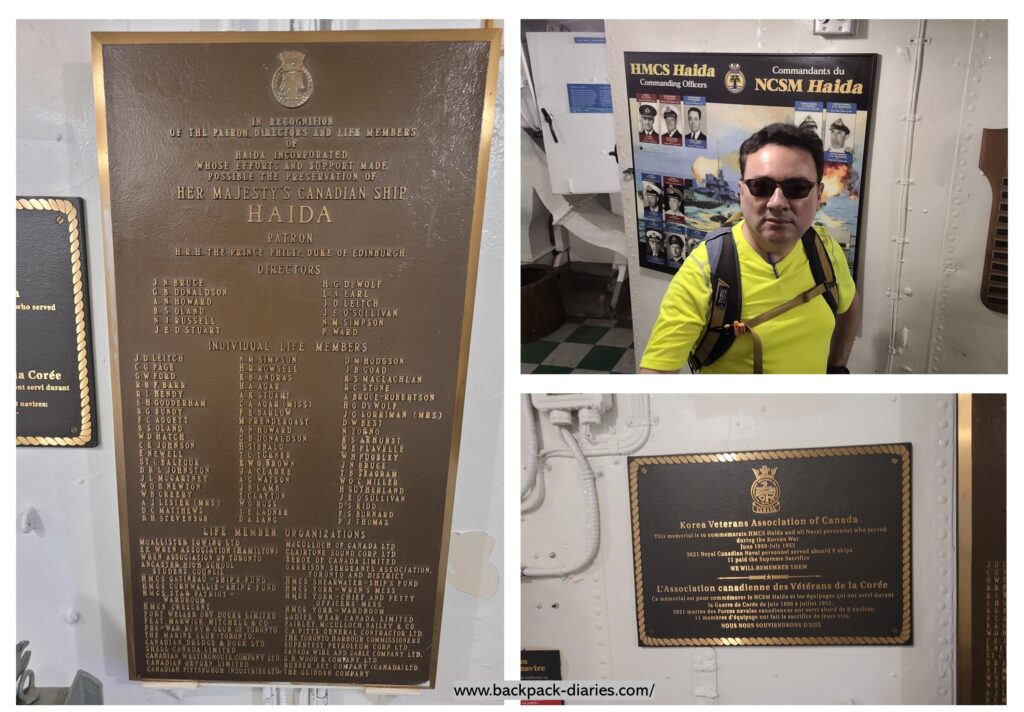
HMCS Haida signal deck
After the engine room, I changed my plan, and decided to continue my visit top-to-bottom decks, so I started from the bridge and signal decks.
The Bridge
The bridge is the command center for weapons, firing, navigation, engine power, and communication . Red phones were used only for damage control.
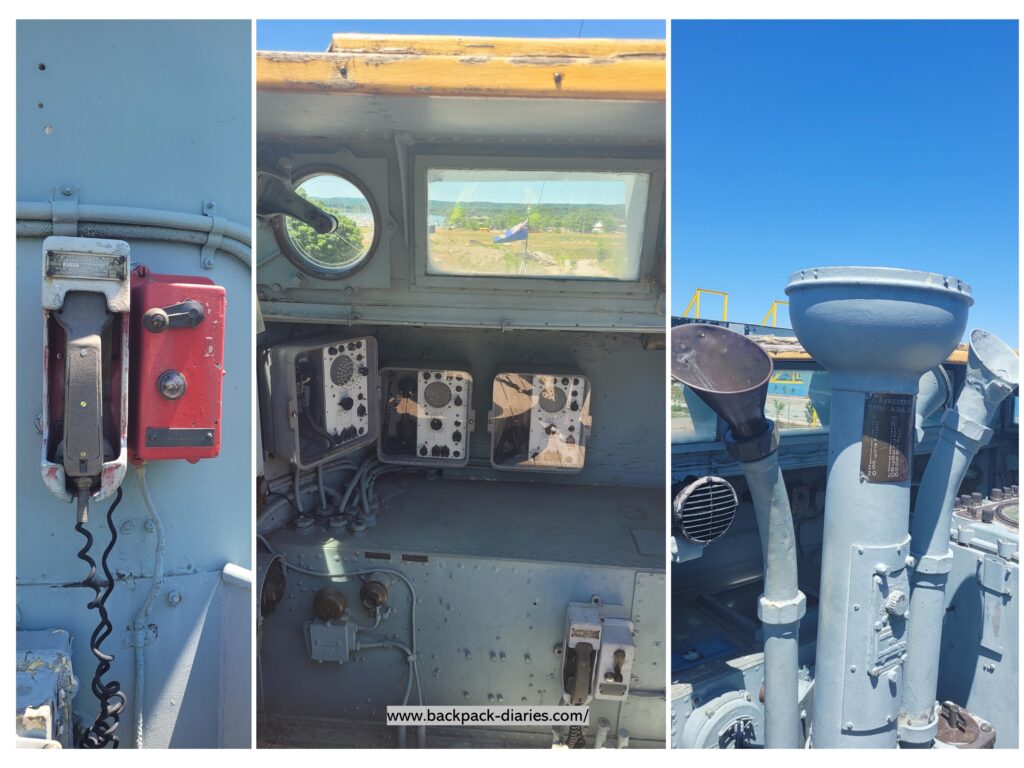
Below the bridge are the operations room, captain’s cabin, and signal flag deck.
The operations room is the ship’s information center. This is a small, red-lit room without windows not good for a claustrophobic person; it houses a sonar, radar, a wheelhouse for steering, and a navigation system with a couple of range finders to find the target’s distance and direction.
The sonar, by the way, a Canadian invention was crucial for detecting German U-boats; this brings to my memory the history of the capture U 505, the only captured U-boat on exhibition is in the Museum of Chicago. I will talk about it in another blog.
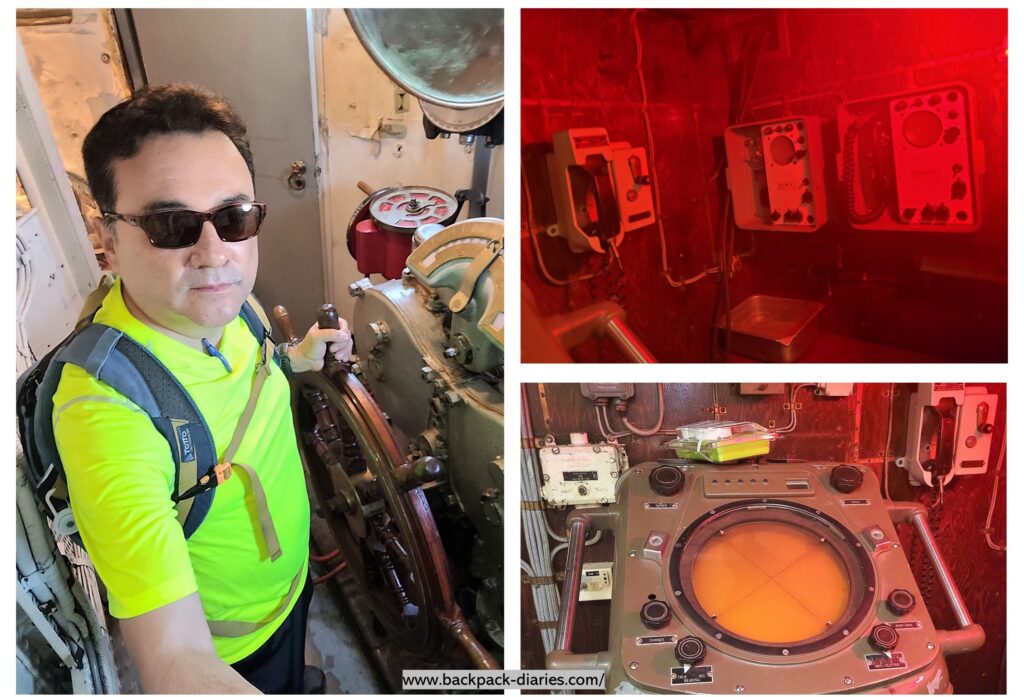
Forecastle Deck
One level down, I met with Kurt, one of the guides on site, who kindly guided us into the officers’ galley and the living room, exclusive to the captain and the officers. Around 20 officers were part of the crew; they supervised trade crews.
There is a bell there, don’t ring it! Or you will pay for the lunch.😅
HMCS Haida’s crew numbered between 225 and 245.
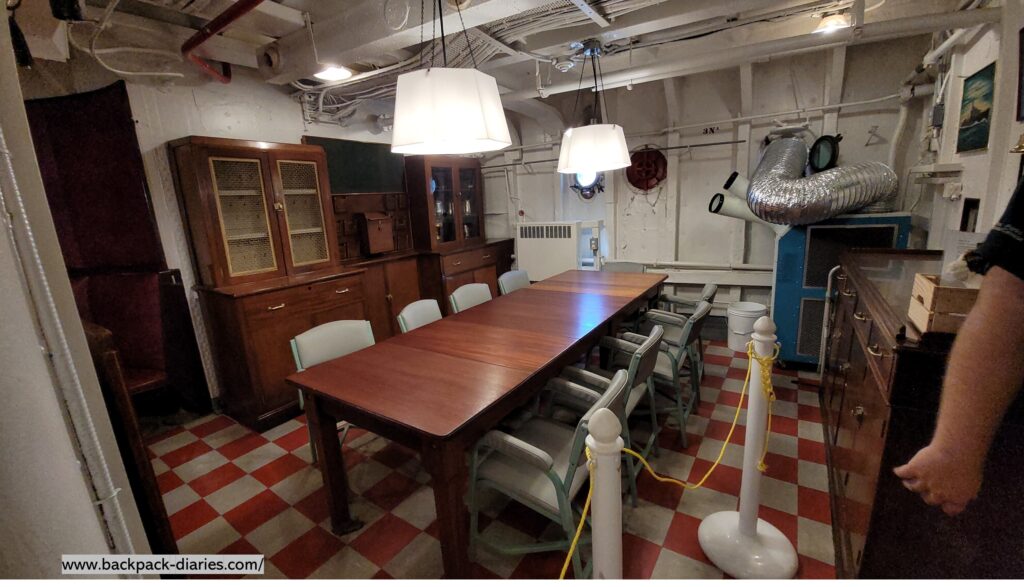
Two seamen were assigned to do laundry for the entire crew. However, before 1949, each person was responsible for their own laundry.
Further ahead is the infirmary; unfortunately, the pass was restricted by a glass barrier.The sick bay was the ship’s hospital 🏥 or infirmary overseen by its medical artificer.

Captain Day Cabin
Next to the sick bay is the captain’s day cabin. From there, he managed all the ship’s affairs; it had an office and dining area, a bedroom, a chimney, and the only private head and wash place on the ship.
This cabin served as an operation room due to its proximity to sick bay. Kurt, one of the guides, commented that two surgeries took place aboard; one of them appendicitis on her maiden voyage, well, in perspective, not as bad as the Titanic’s maiden one. The ship registered only two losses during her naval career when a gun exploded during combat.

Kitchen and officer’s flats
Isolation and camaraderie were common aspects aboard. The ship could be at sea for months and sailors might wait for weeks or months for a letter from family. There was always a risk of not returning home.
Back to the main deck, I continued my walk and came across the kitchen and sleeping flats.
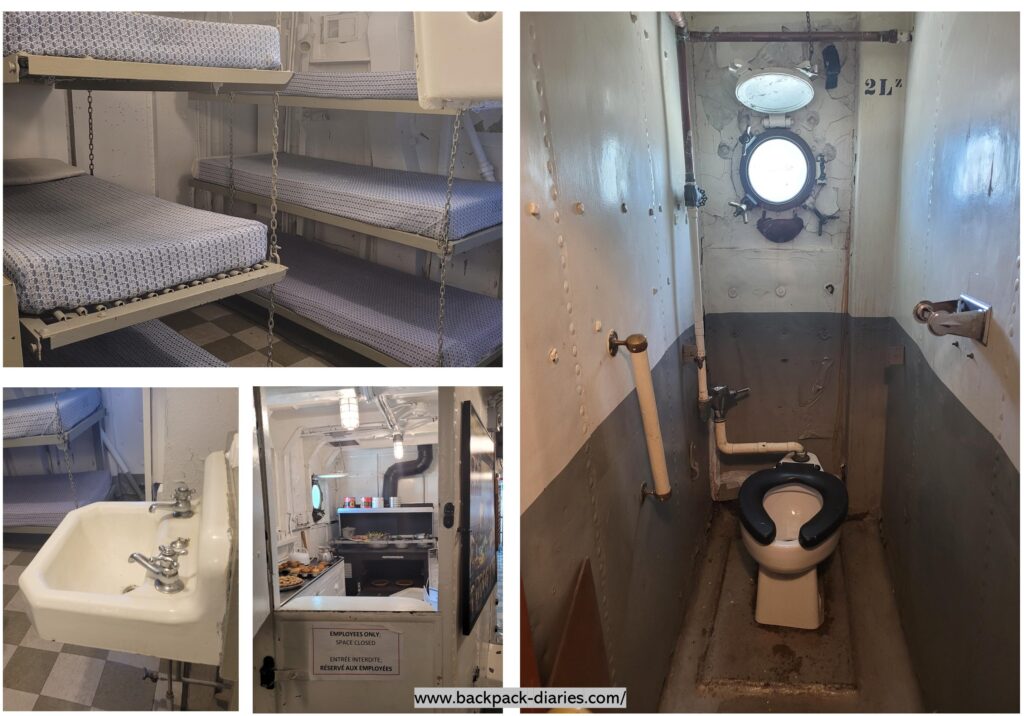
Radio Room 2 and KVA compartment
The lower deck has a radio room 2 and a KVA compartment. Although radio room 1 on the main deck was the central communication command, radio room 2 worked as support for the communication operations or as a standalone unit in an emergency. The largest unit was used only for Morse or teletype.
The KVA compartment generates the power to electronic equipment, and on exhibition is one of two motor alternators. Right after is a cabin where the Chief Engineering worked and slept.

In the upcoming second part of this blog post, I will provide more details about “HMCS Haida’s Weapons and Warfare.“
As we approach the end of 2023, it has been a busy year for me. Many half-finished blog posts that I am working on.
I also invite you to check out my previous post about visiting Argentina’s “Boca Juniors and River Plate football stadiums“.
Your feedback, comments, likes, and shares are always welcome. If you find this post interesting, please share it with others, or you can follow my Facebook page or Instagram.
Thank you, and have a wonderful day!
EO







0 Comments